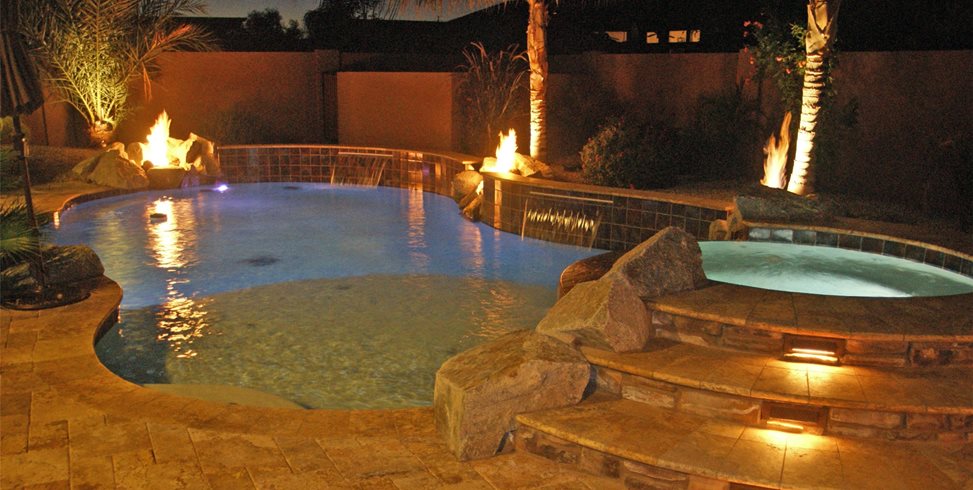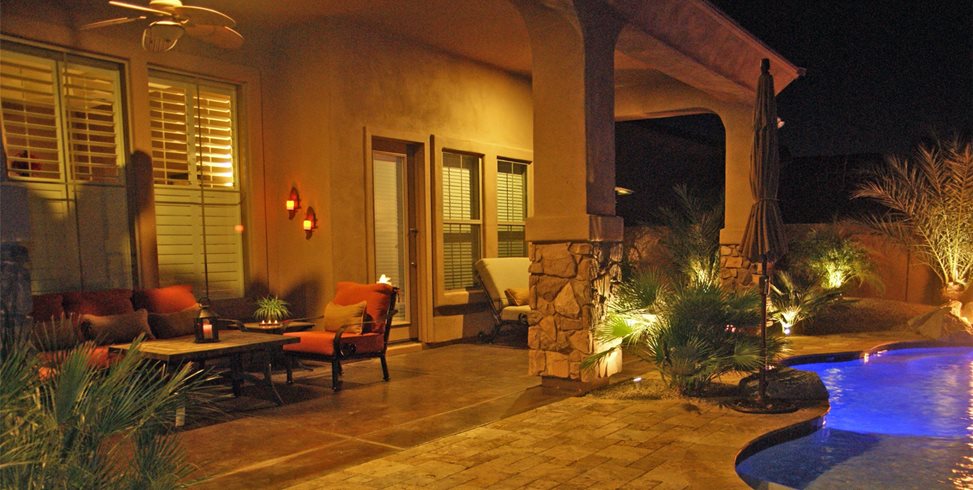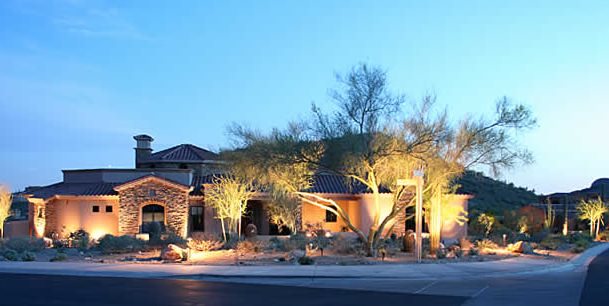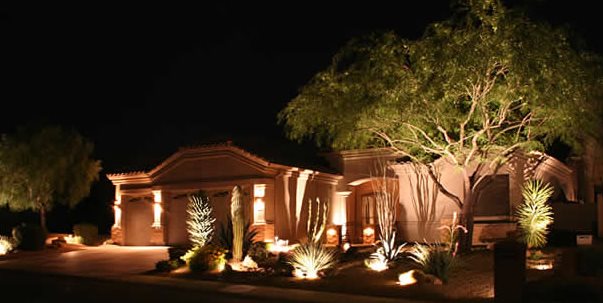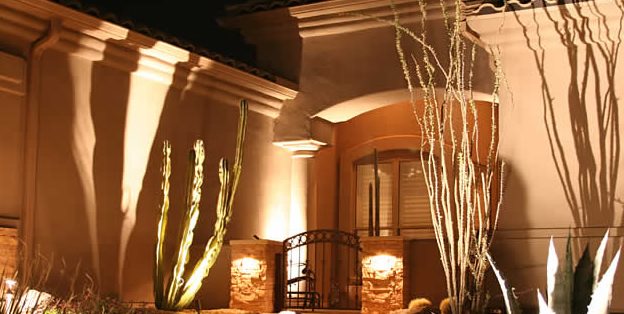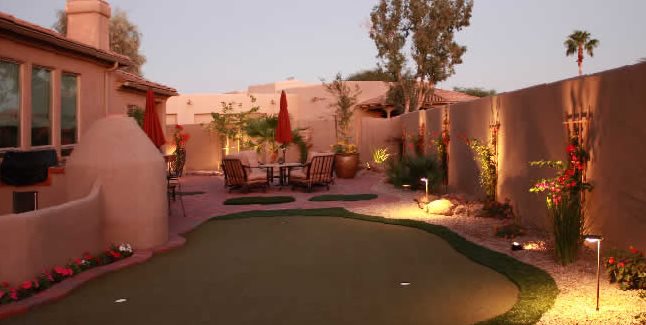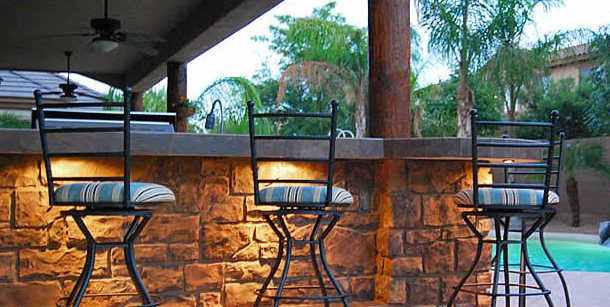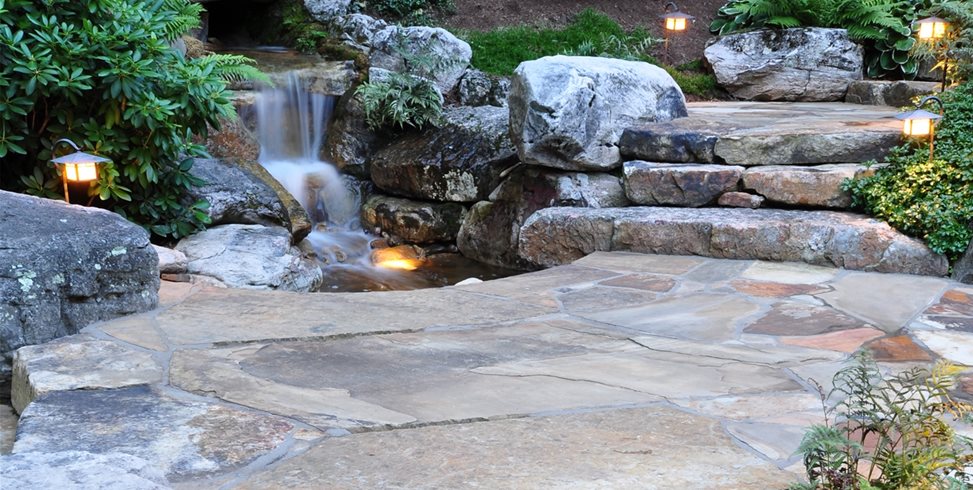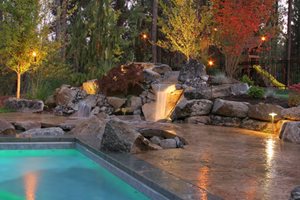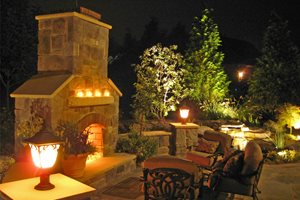Landscape Lighting Design
Professional tips for designing your landscape lightingDesigning your landscape lighting always starts by considering how you intend to use the space. Do you like to entertain and need good lighting on pathways, patios and decks? Do the kids want to play soccer on the lawn after dusk? Or do you simply want to enjoy a beautiful view as you drive up to your home each evening? Here, landscape contractors share their pro tips for designing with lights.
Layout considerations
In addition to thinking about how you plan to use the space, there are design considerations as well. Lights can help you safely travel down a pathway, but they can also provide a gorgeous view and allow you to enjoy your landscaping even after dark. The design elements of your layout are every bit as important as the function of your layout. Keep in mind:
- Views from indoors - “I’ll look out of every window in the house to make sure our design is integrating the lighting with the landscape,” says Edward Snyder of Greenleaf Services, Inc. in Linville NC. “We want to capture a beautiful scene from every window.”
- Focal points - Choose one or two elements in each area to draw attention to. “Hemlock trees, with their reddish-brown bark and dark green foliage, make a great focal point when lit from below,” says Gerry DuBreuil of Belknap Landscape Company, Inc. in Gilford, NH. “Think about what will have the best shadow effect.”
- Sense of depth - “We use some lights along pathways, some on the house, and some within landscaped beds to provide a feeling of depth in the landscape,” says Matt Barton of Coppercreek Landscaping, Inc. in Mead, WA.
- Ambient vs. spotlighting - Ambient lighting creates atmosphere by gently lighting an entire area, while spotlighting draws strong attention to a particular feature. “We use both broad and focused beams within the landscape,” says DuBreuil.
Landscape Lighting Tips
Find out how landscape lighting will increase your home’s security and help you get more enjoyment out of your property. McKay Landscape Lighting, the market leader in the Omaha region, shares their insights on LED technology, lighting patios and paths and more
Lighting strategies
There are three main ways you can aim lights to get a particular result in the landscape.
- Downlighting creates diffuse, gentle light by aiming lights downward, usually from a tree. “Like I tell my clients, if I could give you a full moon every night, wouldn’t you want to do that?” says TJ Wilcoxson of Alexon Design Group in Gilbert, AZ. “Moonlight is romantic and great for conversation.”
- Uplighting is all about the drama of bold shadows and strong effects. By aiming the lights upwards into a tree or onto an architectural feature, you emphasize the contrast of dark shadows with bright light.
- Crosslighting is when you eliminate shadows by lighting a focal point from both sides. “Saguaros, agaves, and boulders look incredible when crosslit,” says Wilcoxson. “You can even light up the entire canopy of a tree this way.”
What areas should you light?
There are many benefits of landscape lighting, it helps improve the safety and security of your home and adds functionality and beauty. Here are the most common areas to light:
- Pathways are important both for safety and for beauty, but you don’t always need to use path lights right along the side. DuBreuil suggests mixing directional path lights with ambient lighting within the landscaped bed for a more natural look.
- Patios are where we spend time with family and have conversations, so diffuse downlighting from above gets that moonlit effect without blinding people.
- Trees are an ideal candidate for uplighting or crosslighting. “When there’s a unique branch structure or colored bark, it makes an ideal focal point,” says Snyder. You can also create downlighting effects by placing lights within tree branches and aiming them downwards at a patio or garden bed.
- Water features can be lit as well. While we don’t think of electricity and water as natural partners, in fact many landscape lights are meant for underwater use. “We nestle lights in between rocks so you see the effect of the light without seeing the fixtures,” says Barton.
- Architectural elements on the home can also be lit to great effect. “If you have a $500 tree and a $500,000 home, why would you focus only on the tree?” says Wilcoxson. “I like to light up pillars, stacked stone, or other architectural features.”
- Driveways don’t need a lot of lights, as most people using a driveway will have their headlights on. But you can beautify the journey to the home by lighting the landscape nearby.
Special effects with lighting
There are a lot of ways of playing with light and shadow to create special effects in the landscape. Dubreuil suggests filtering light downwards through the canopy of an oak, pine or maple tree to get a lacy shadow effect on the patio. Barton amplifies the effect of a focal point by using it to cast a dramatic shadow on the home. And Wilcoxson aims shadows from palm trees or fireplaces onto the rippling surface of a water feature. The effects you create will depend entirely on your own landscape and architecture.
Return to Landscape Lighting

 Backyards
Backyards
 Front Yards
Front Yards
